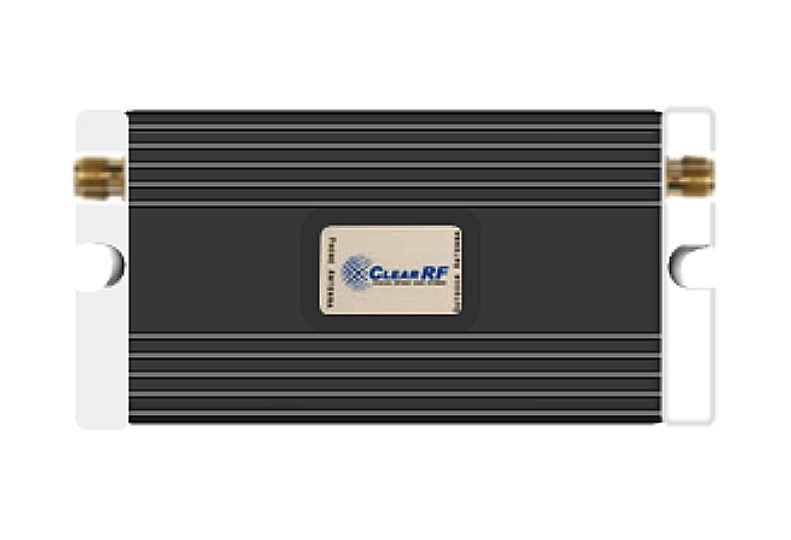
Home » Cell booster maker shifts focus away from retail
Cell booster maker shifts focus away from retail
ClearRF sets its sights on machine-to-machine uses

May 22, 2014
ClearRF LLC, the 4-year-old Spokane Valley-based maker of wireless signal amplifiers, is leaving the consumer market and plans to focus fully on what’s called the machine-to-machine, or m2m, sector.
The move is intended to enable the company to pursue larger contracts—and ultimately sell more units, says Chuck Griep, director of sales and marketing for the company founded by the principals of contract manufacturer Servatron Inc.
“Instead of selling a handful of consumer products a month, we’re now looking at 1,000 units a month with m2m,” Griep says.
He adds, “I see an opportunity for ClearRF to go from being a startup to a big company or have other manufacturers interested.”
Meantime, the company has developed a new prototype of its main product, called the ClearRF M2M Cellular Booster, that it expects to roll out soon. That booster has new technology expected to make it more attractive to commercial users, Griep says.
The m2m market involves business practices in which machines communicate with one another via a wireless connection. Such technology is used in security systems, fire-protection systems, automatic-teller machines, irrigation-control devices, utility smart metering, and train-and-rail monitoring operations. Vending machines, including those used by big movie-rental system Redbox Automated Retail LLC, also use such technology.
In such machines, the ClearRF booster is designed to strengthen weak cell signals and ensure uninterrupted connectivity.
Located within Servatron’s offices at 12825 Mirabeau Parkway, ClearRF has about 10 employees who work for it exclusively. Servatron acts as the contract manufacturer for the product, and its principals who started ClearRF—Tod Byers, John Muskulin, and Keith Swenson—all are involved in the younger company as well.
Griep declines to disclose revenues or unit-sales data. However, he says the company is approaching profitability.
The company has worked in the m2m market since its inception, but Griep says it plans on growing its presence there. Currently, the company’s work in that market is split evenly between the railway, fire and security, and utility smart metering markets.
“It’s kind of neck and neck right now with penetration we’ve had in those markets,” he says.
In the consumer market that ClearRF is leaving, Griep says the signal boosters were well received, especially by those who lived or worked in remote rural settings with unpredictable cell coverage, but people often balked at the $299-per-unit price point.
In the commercial market, he says, the only price sensitivity thus far appears to be among vending-machine operators, which in some cases are smaller companies or individuals.
While the product initially was envisioned to be most useful in rural environments, Griep says that in the commercial market, it’s use is split evenly between urban and more remote settings.
In cities, Griep asserts that some devices with m2m technology have a weak signal due to their placement in a building or because of nearby structures, trees, or other obstructions. In those cases, he says, such devices can struggle to compete for coverage.
“Within an urban area, you can be close to a cell tower and have signal issues,” he says. “A lot of it is cellular saturation. If your device signal isn’t strong enough, it might not be heard because the noise floor is so high.”
The new prototype of the ClearRF booster is expected to be ready for the commercial market in coming weeks; Griep says the company is putting the “final touches” on it now.
One key feature of the new generation of the device, he says, is what’s called passive bypass technology. One criticism of booster technology—in ClearRF’s device and others on the market—has been that if a booster lost power for some reason, the entire system would go offline, and the m2m device would lose all ability to communicate.
With a passive bypass, the ClearRF device essentially will allow a signal to pass through the device, unenhanced but also uninterrupted, if it loses power or goes down for some reason.
The company has a patent pending on its passive bypass technology, Griep says.
The decision to depart from the consumer market came about when the company began looking to recertify its product with the Federal Communications Commission and its Canadian equivalent, Industry Canada. He says the recertification process—something he says the FCC required of all booster manufacturers—was an arduous, eight-month process, and as it worked on the requirements for recertification, the company began looking at shifting gears.
“It was a great time to make that break and go in this new direction,” he says.
Servatron, the larger affiliated company, is a 14-year-old spinoff of Itron Inc., the Liberty Lake-based maker of automated meter reading technology. The contract manufacturer has diversified since the spinoff, but it still does a substantial amount of work for Itron.
As of April 1, Servatron had 135 employees, according to information provided to the Journal for its Leading Spokane Manufacturers list that appears in this edition. The company reported $23.8 million in revenue for last year, down from $28.6 million the previous year.
Latest News Manufacturing Technology
Related Articles
Related Events





